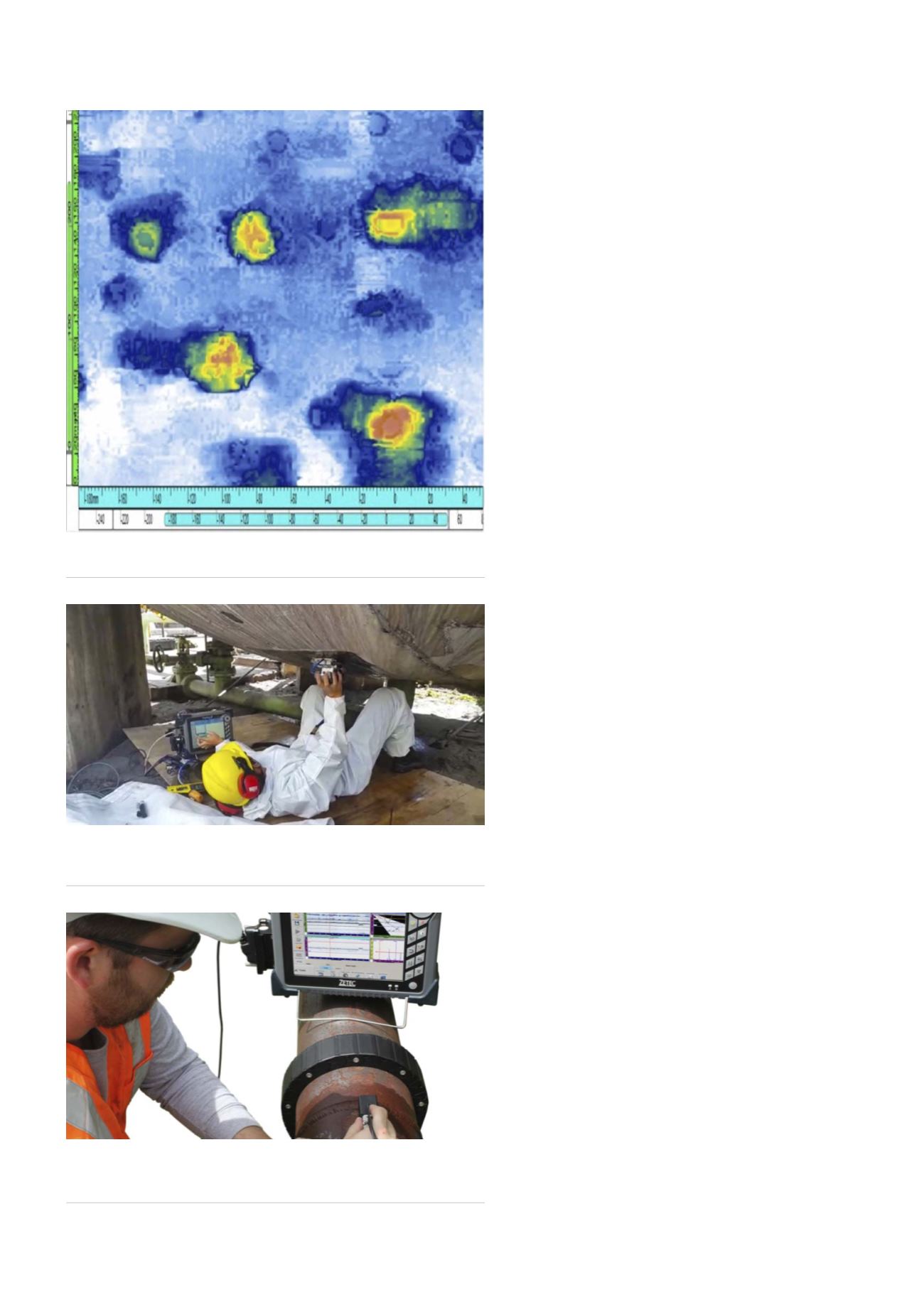
focusing method (TFM). As a result of advancements
in software, portability, and battery life, technicians
can bring this computing power virtually anywhere
the work takes them, whether it is at a manufacturing
plant or out in the field.
These instruments and their software are, of
course, only part of an overall phased array UT
solution for internal pipeline inspections.
Corrosion probes
For reliable, accurate C-scan imaging on piping and
other curved parallel-sided surfaces, the preferred
probe has typically been a dual-element transducer
with a roof angle. One element transmits ultrasonic
energy into the surface of the material, while the
other receives energy returning from the bottom
reflection. This pitch-catch technique produces very
little interface echo, which results in better near-
surface resolution, allows the use of higher gain, and
generally allows for more reliable detection and more
accurate thickness measurements compared to pulse-
echo probes.
In many cases pipeline scanning is a manual
procedure, where the only record of the examination
is a report listing the nominal wall thickness and the
minimum thickness measured on locations defined by
a grid. Adjacent areas that may have less overall wall
loss from corrosion can potentially go undocumented,
or result in a sampling of thickness measurements that
is far from being a detailed map of the actual internal
topology of the pipe.
For more critical inspections, automated ultrasonic
testing (AUT) is the typical alternative. AUT combines
a multi-channel UT instrument with a mechanised
position and orientation encoding system, to guide
the scanner over a specific scan path with no manual
manipulation of the probe. This automated approach
can produce rich, detailed inspection data quickly,
with reliable coverage and a high level of repeatability.
However, a conventional automated acquisition
system consists of multiple components: a scanner,
motion controller, couplant feed system, battery
back-up, and extensive cabling.
The necessary hardware can be complicated to set
up and calibrate, pose access limitations in tight or
constricted work areas, and require extra personnel
to use – all of which adds time and cost to the
examination.
New approaches to UT inspections
Suppliers of portable phased array UT instruments
continue to refine their products to take advantage
of greater processing power. However, for pipeline
examinations, two other emerging trends are worth
noting: the development of manual 2D encoded
scanners, and a new non-mechanised encoding system
that uses airborne ultrasound for tracking probe
position and orientation.
Figure 1.
An example of a thickness map generated using LATITUDE.
Image courtesy of Structural Integrity.
Figure 2.
Manual 2D encoded scanners such as Zetec’s NDT PaintBrush
can work on both flat and curved surfaces. Unlike wheel probes, both
axes are encoded. Image courtesy of Zetec.
Figure 3.
LATITUDE is designed to enable the collection of high-quality
encoded data using a manual examination process. Image courtesy of
Structural Integrity.
76
World Pipelines
/
MARCH 2020








